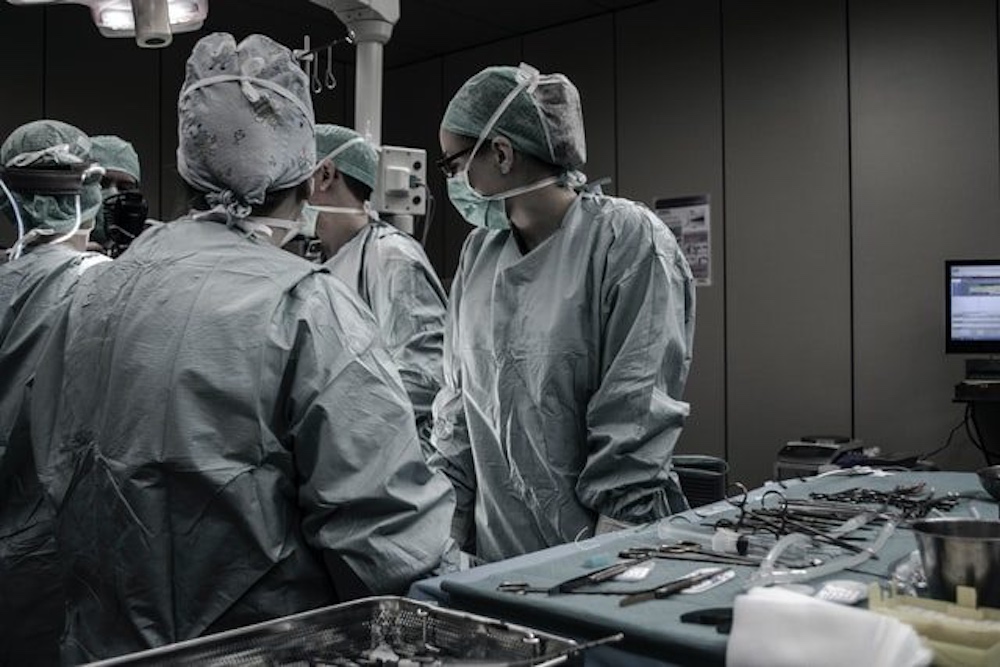Virtual Reality: Training the Medical Practitioners of Tomorrow
Traditionally, medical training involved cadavers, synthetic models, and living patients, yet virtual reality (VR) simulation offers increased accessibility often at lower prices. This guest article by Luna Williams, a commentator at Arora Medical Education, shares how the U.K.’s National Health Service has transitioned to incorporate more use of virtual reality across both healthcare and educational settings. As a result, learning experiences have become more technologically advanced, immersive, and accessible. Through these experiences, learners can come to better understand the knowledge and skills necessary to become successful medical practitioners.
Over the last century, healthcare in Britain has changed immeasurably. The National Health Service (NHS), founded in 1948 and internationally acclaimed, made preventative medicine, curative treatment, and surgical operations easily accessible to people across the United Kington. Yet, according to a recent report by the Commonwealth Fund, the NHS lost its previous rank of the best medical system in the world, now surpassed by Norway, the Netherlands, and Australia. The report cited delays in care and an extensive patient backlog as primary factors.
In 2019, education charity Edge Foundation reported that the NHS was experiencing a significant skills shortage. Almost 10% of NHS positions were vacant. The report highlighted issues relating to surgical treatments, mental health therapy, and adult social care. This, in combination with increased pressure due to the COVID-19 pandemic, Brexit uncertainty, and a reduction in funding has prompted concern for the future of the NHS.
Sponsored Content:
Further justifying this concern, in August, NHS waiting lists reached a record high, with nearly six million people waiting for treatment in England alone. Almost 10, 000 people had been waiting for more than two years to begin hospital treatment. 1 in 10 nursing positions was vacant in December. One GP is shared among 2087 patients.
Without action, experts estimate that the shortage of healthcare professionals will continue to grow, with 350, 000 positions unoccupied by 2030. The increasing integration of technological advancements, however, not only in care delivery but also in the training of healthcare professionals, gives cause for optimism.
Virtual Reality: A Lifeline for NHS?
Two years ago, the Government presented a “Long Term Plan” for the NHS. According to the plan, a revolutionary technology will be used to advance innovations in treatment, reduce mortality rates and diminish the so-called skills shortage. Experts predict that AI will play a greater role in diagnosing patients and designing personalized treatment plans. Increasingly, drone technology is being used to support emergency services.
Sponsored Content:
Virtual reality has long been used in healthcare. A surgeon in Minneapolis, for example, successfully used VR to separate twins conjoined by their hearts and livers. Increasingly, research groups within the NHS are experimenting with using virtual reality as a kind of pain relief for pediatric burns victims receiving skin grafts or dressings, and in therapy for patients suffering from PTSD. In 2009, a doctor performed the first virtual reality simulative surgery to successfully remove a brain tumor.
During the pandemic, the Imperial College Healthcare NHS Trust collaborated with Microsoft to devise a mixed reality headset. This resulted in an 83% decrease in the amount of time healthcare professionals spent in high-risk areas. Kent Community Foundation used MedTech technology to aid recruitment, training, and management of staff when “stay at home” orders were imposed.
Virtual reality is also an excellent educational tool. Children’s Hospital LA, for example, uses the Oculus Rift to train doctors on treating children involved in medical emergencies. In a 2018 study, medical students used VR technology during laparoscopic surgery training. The outcome of the study suggested that 74% of learners were able to achieve higher grades with VR. Higher surgical accuracy was also reported in 87% of learners.
Making Medical Education More Accessible, Much Less Hazardous
Many VR systems do not actually require an instructor to be present during use, enabling hospitals and teaching institutions to conserve valuable resources. With virtual reality, learners may be scattered across the globe, rather than physically present in a room. VR is also incredibly immersive, making the user feel psychologically present within the simulated reality. This immersive quality is great for simulating pressurized environments, such as operating theatres and emergency departments. Scenarios can be repeated, allowing students to learn from their mistakes without fearing errors.
Teaching Compassion Through Technology
In a recent study of staff at Sheffield Teaching Hospital, the majority of respondents acknowledged difficulties when communicating bad news to patients. Of them, 57% of respondents said that this was due to barriers to communication. VR simulations are an effective tool when teaching learners how to discuss difficult subjects, such as the death of a loved one or a cancer diagnosis. By talking with a virtual patient, learners can better interpret and respond to both verbal and non-verbal cues, improving their capacity for compassion and empathy.
Using VR to Inspire Learners of Tomorrow
A recent study found that Generation Z (people born between 1996 and 2015), is the most technologically adept generation yet. Their identity is inextricably linked with the digital world. These are the individuals that the NHS must look to inspire to become the next generation of healthcare practitioners. Industries around the world are rapidly evolving in accordance with technology and to continue to thrive, the NHS must demonstrate similar evolution. By using technological advancements such as VR as part of an educational framework, the NHS can attract, retain and develop talented learners and staff members.
Over the coming decades, healthcare practitioners and researchers must continue to collaborate with companies developing medical VR technologies.
Learn More About Arora Medical Education
Today’s article was guest authored by Luna Williams, Commentator at Arora Medical Education.
Have a story to share with the global healthcare simulation community? Submit your simulation news and resources here!
Sponsored Content:

















